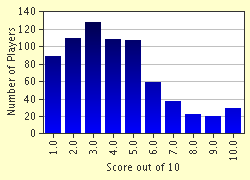Quiz Answer Key and Fun Facts
1. Which of the following can be thought of as a special case of the Mean Value Theorem?
2. How many REAL roots does the polynomial x to the fifth +12x-7 have?
3. What is the integral from -Pi over 7 to Pi over 7 of Sin(x cubed)?
4. What is the integral from 0 to Pi over 2 of (Sine of x divided by the sum of Sine of x and Cosine of x)?
5. Which of the following statements are true? 1. If a function is Continuous on the closed interval between 0 and 1, it must be Riemann integrable. 2. If a function is Riemann Integrable on that interval, it must be continuous there. 3. If a function is bounded on the closed interval containing 0 and 1 its integral must exist there?
6. How many roots (real or complex and counting multiple roots the number of times they occur) will a polynomial of degree n have?
7. Suppose a function satisfies f(0)=1 and f(2)=-1. What can we say about the roots of the function between 0 and 2?
8. True or False: If two infinitely differentiable functions match in their value and all their derivatives at a point, then the functions must be the same?
9. Are the following statements true or false: A. If a function is differentiable at 0, it is continuous there. B. If a function is differentiable at 0, its derivative is continuous there?
10. You have a double integral of a continuous function over a bounded region, and you calculate it by evaluating the integrals one at a time. Whose theorem did you just use?
Source: Author
kevinatilusa
This quiz was reviewed by our editing team before going online.
Any errors found in FunTrivia content are routinely corrected through our feedback system.

